Washoku, a culinary tradition from Japan, is much more than just a way of preparing and enjoying food. It’s a fascinating journey into a world where culture, nature, and flavors come together to create a unique and profound dining experience. From the ingredients that change with the seasons to the meticulous presentation and culinary philosophy, Washoku embodies a deep connection to Japanese heritage and offers a delightful exploration of tastes and traditions cherished for centuries.
What is Washoku?
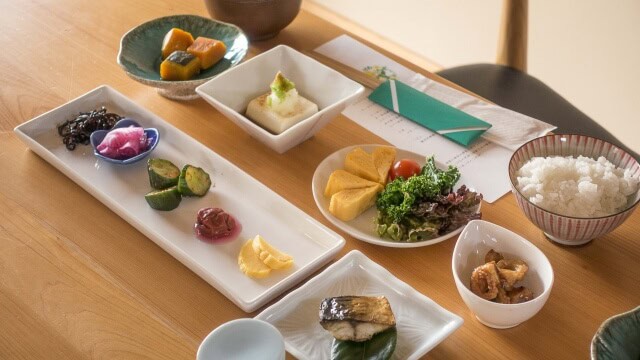
Washoku (和食) is the traditional cuisine of Japan, and the term is translated as “Japanese food” or “Japanese cuisine.” Characterized by a focus on fresh, seasonal ingredients and a harmonious balance of flavors, colors, and textures. Washoku reflects the deep connection between nature and Japanese culture.
In a broader sense, it encompasses all Japanese meals commonly enjoyed. In a narrower sense, it involves vegetarian and kaiseki cuisine formats, along with traditional dishes tied to seasonal events like equinox botamochi, cherry blossom dango, moon viewing treats, and winter solstice pumpkins.
Washoku History
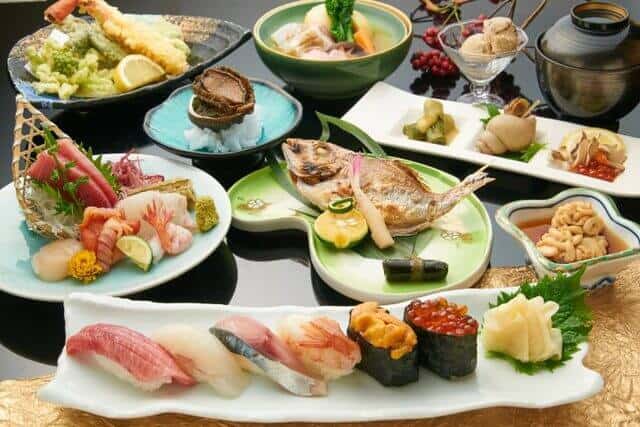
Japanese cuisine is known for celebrating the beauty of each season and using the finest ingredients. However, it has also gone through significant changes over time. One pivotal moment was the “meat-eating ban” imposed by Emperor Tenmu in 675 AD, which lasted for about 1,200 years until the beginning of the Meiji period. During this time, Japanese people didn’t eat meat, though their consumption was much less than in the West. Because rice cultivation techniques were introduced from the continent, it couldn’t be considered purely “Japanese food culture” until the Heian period. It was during the Heian period that Japan’s unique food culture began to take shape. With the rise of Zen Buddhism, cooking methods like making soup stock gained popularity.
Japanese cuisine has its origins intertwined with hospitality to the gods, often associated with a “food culture centered on rice and fish.” They found this connection to the divine in ancient myths like the “Kojiki” and “Nihonshoki.” Japanese cuisine is unique in how it links the gods of nature to the annual food events. It’s a way of paying respect and gratitude to the natural world.
According to the booklet by the National Council for Japanese Cuisine Culture, Japanese cuisine’s basic form includes rice, soup, vegetables, and pickles. It incorporates both native and imported ingredients, with a focus on seafood and seaweed. The preparation methods are simple, involving steaming, boiling, and simmering, and there’s a rich culture of soup stocks and seasonings. This culinary tradition has evolved, with its roots traced back to the Heian period. Kyoto cuisine chefs create menus based on “side dishes, sashimi, soups, grilled foods, fried foods, grilled foods, and pickled vegetables,” allowing flexibility in daily meal preparation.
Recognition of Japanese Traditional Food Culture
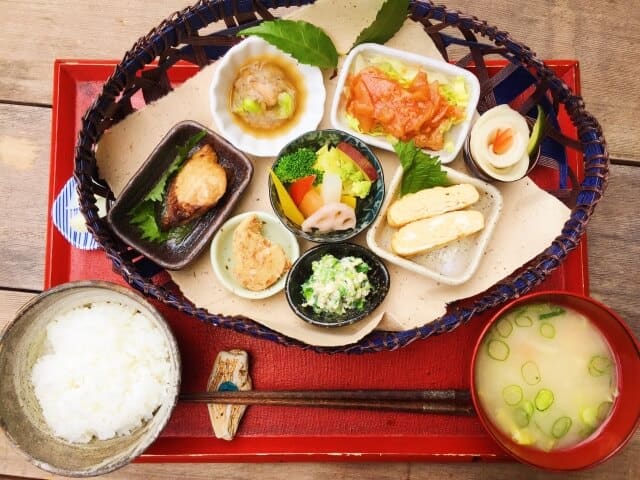
“Wa” means Japan, and “shoku” means “to eat.” The reason why Japanese cuisine has been recognized so far is because of the splendor of the ingredients created by Japan’s geographical conditions, climate, and natural features, which have created the current Japanese cuisine. In December 2013, Japanese cuisine was registered as a UNESCO Intangible Cultural Heritage as “Japanese Traditional Food Culture.”
Key Elements of Washoku
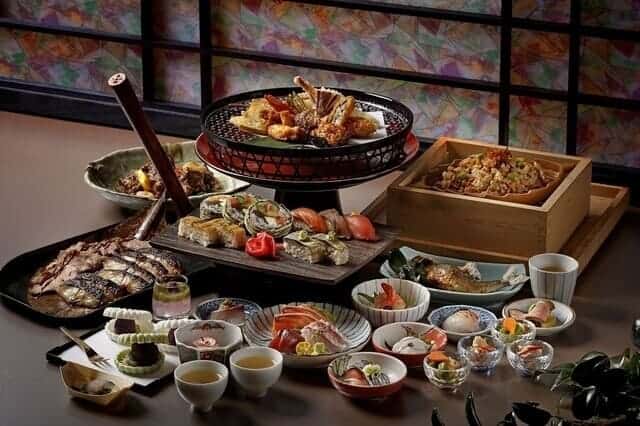
Washoku typically follows a basic format called “Kihonkei,” which includes rice as a central element, along with a main dish (often meat or fish), one or two smaller side dishes (like vegetables), and a serving of pickled items known as “tsukemono.” This combination is sometimes they referred to as “One soup, three side dishes.” The main dish, or “main event,” takes center stage alongside the rice. It’s a flexible approach, so the number of side dishes can vary. It’s essential to focus on using fresh ingredients like seasonal vegetables, seafood, and meat to create a well-rounded, nutritionally balanced meal. You can also find Japanese dishes like curry rice, sushi, udon, and soba noodles that mix rice and side dishes in one, offering various flavors while still being considered part of Japanese cuisine. Locals cherished this traditional food structure in Japan for a long time.
Key Aspects of Washoku
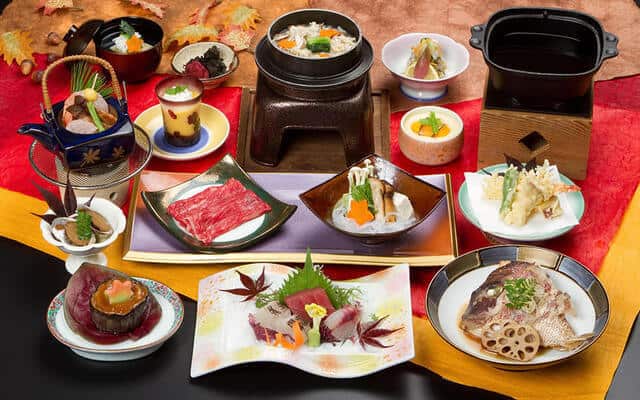
Embracing Saijiki in Cooking
Washoku has a unique culinary philosophy centered around Saijiki, which was initially a record of customs and seasons. Japanese sweets, for example, reflect the changing seasons based on Saijiki. Spring-inspired sweets feature cherry blossoms, summer ones have a refreshing, watery feel, autumn treats include motifs like leaves and chrysanthemums, and winter creations often have New Year’s decorations.
Valuing Seasonal Ingredients
Washoku places great importance on the seasonality of ingredients. It means using ingredients that are at their best during a particular season. This ensures freshness and flavor, allowing the taste of the season to shine through. The cuisine aims to capture the essence of each season.
Respecting Ingredients
In Washoku, ingredients are categorized as first-time products, pastures, and remnants. The cuisine takes care to use each type thoughtfully. This means using the freshest ingredients for the best results and not letting anything go to waste.
Close relationship with annual events
Japan’s food culture has been nurtured in close connection with the New Year, seasonal festivals, and annual events. At festivals, locals worship ingredients that are a blessing from nature at that time of year, receive them from the gods, give thanks to the gods, and deepen their bonds with people by spending time with the gods and eating together with their families and friends in the community.
Distinguishing Japanese Cuisine from Washoku
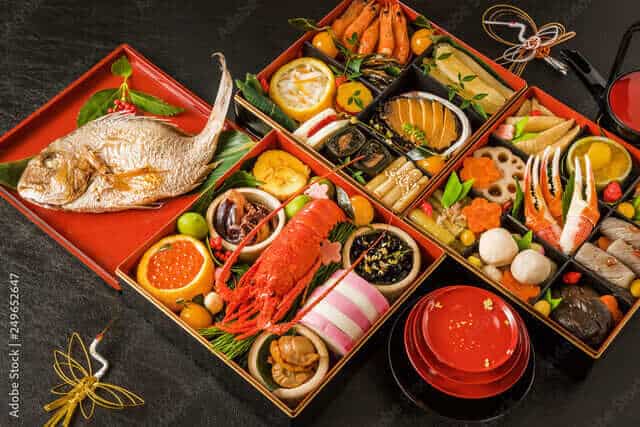
In Japan, there’s a difference between “Japanese cuisine” and “Washoku.” Japanese cuisine typically refers to dishes created for special occasions and festivals, known for their use of lavish ingredients and beautiful tableware to please the eyes. The terms “Japanese cuisine” and “Washoku” were introduced in response to the arrival of “Western cuisine” (Yoshoku) during the modernization era.
While “Japanese cuisine” often implies high-end dining in Japanese restaurants, there’s an opinion that “Washoku” is a more fitting term to describe Japan’s complete food culture, encompassing both sophisticated dining and everyday home-cooked meals. The use of these terms has evolved. Initially, in the early 20th century, “Japanese cuisine” referred to home cooking, and there were only a few books discussing it. It wasn’t until the middle of the 20th century that “Japanese cuisine” became popularized, while “Washoku” gained prominence later. Nowadays, authoritative dictionaries define “Japanese food” more simply as a “Japanese-style meal” or “Japanese cuisine,” though “Washoku” holds a deeper cultural connotation.
Popular Washoku in Japan and internationally
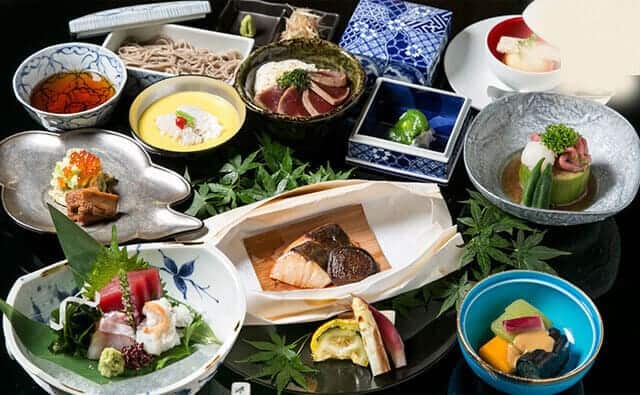
- 1st Place: Sushi
-
Sushi takes the top spot, and it’s a dish Japan takes great pride in worldwide. People love sushi for several reasons. It’s simple yet perfected, and the more you learn about it, the more fascinating it becomes. Sushi used to be considered a luxury for special occasions, but with conveyor belt sushi restaurants, you can enjoy it casually anytime.
- 2nd Place: Fried Chicken
-
In second place is the classic comfort food, “chicken karaage.” Fried chicken is a favorite for its crispy texture, flavorful batter, and juicy meat. It’s boneless and easy to eat, making it a hit with even picky eaters. You’ll find it on the menu at izakaya restaurants. You can enjoy it in various ways, from zesty grated radish and ponzu sauce to a Korean-style gochujang-based sauce.
- 3rd Place: Tempura
-
Tempura is a versatile dish that pairs well with rice bowls, soba, and udon. Tempura is a beloved Japanese food, especially for tourists. Some examples by season include lotus roots and scallops in winter, and prawns and corn in summer.
- 4th Place: Miso Soup
-
Miso soup is a common sight on Japanese dining tables, and it comes in various regional and family variations. For example, in Yamagata, they add ground natto to create “natto soup,” and in Ibaraki, “dobu soup” features monkfish liver and miso seasoning.
- 5th Place: Udon
-
These thick and chewy noodles come with a wide range of delicious toppings. Takamatsu City in Kagawa Prefecture is known as the “Udon Prefecture” and spends the most on udon each year. People in Kagawa love their Sanuki udon, and it’s easy to see why. Here’s a list of popular udon toppings to inspire your cooking or ordering: Tororo, fried oysters, tenkasu, beef, pork, egg, and green onion.
Washoku FAQ
- What is the importance of umami in Washoku?
-
In Washoku, umami is highly valued as it enhances the overall flavor profile of dishes. It is commonly present in ingredients such as dashi (a broth made from kombu seaweed and bonito flakes), soy sauce, miso, mushrooms (like shiitake), fermented products like soybeans, and certain meats and seafood. This taste sensation adds depth and complexity, contributing to the overall deliciousness of the food.
- Are there any dietary restrictions or health considerations associated with Washoku?
-
Washoku is known for its balanced and nutritious approach to eating. A typical meal includes rice, a source of protein (often fish or tofu), a variety of vegetables, and soup. This balance provides essential nutrients and helps maintain a healthy diet. Japanese cuisine often emphasizes smaller portions. This helps control calorie intake and promotes mindful eating. The focus is on quality over quantity.
Where to buy Washoku?
Wadakura (和田倉)
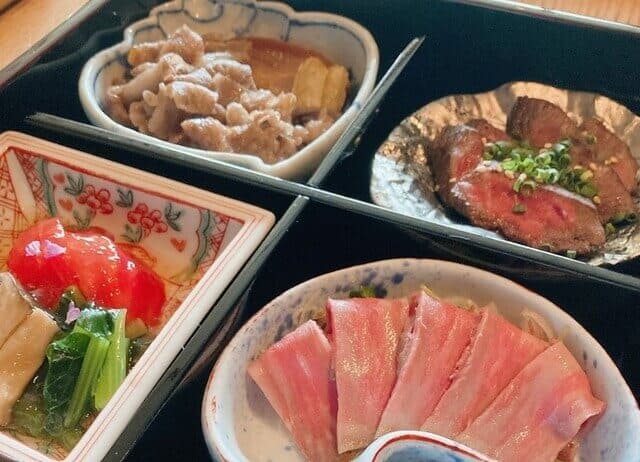
Wadakura has been loved by many as a famous Kaiseki restaurant since the days of the former Palace Hotel. You can enjoy traditional Japanese cuisine while overlooking the Wadakura Moat and Wadakura Bridge, which are the origin of the restaurant’s name.
Insho-tei (韻松亭)
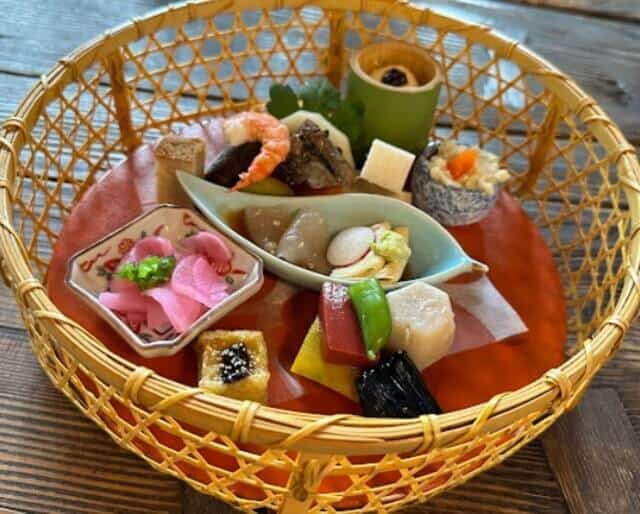
The history of Insho-tei, which was founded in 1898, is also the history of Ueno Park. The restaurant focuses on bean vegetable dishes, using plenty of beans and seasonal fresh ingredients, and delivering them to their meals with care. They are also particular about the ingredients we use to deliver colorful and vibrant ingredients. Their legume dishes start and end with beans.
Tofutei (日本料理「渡風亭」
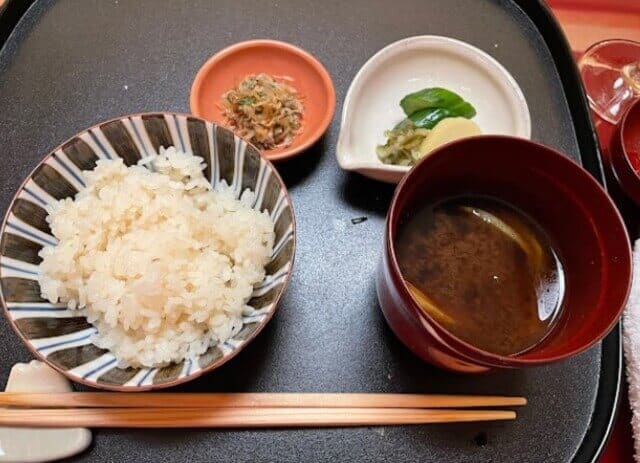
In a private room that still conveys the traditional beauty of Japan, they offer Japanese cuisine prepared using traditional Japanese techniques with a modern sensibility, using seasonal ingredients and the skills of skilled craftsmen. They also prepare a special celebratory course meal using seasonal ingredients that bring good luck.
Takeaway
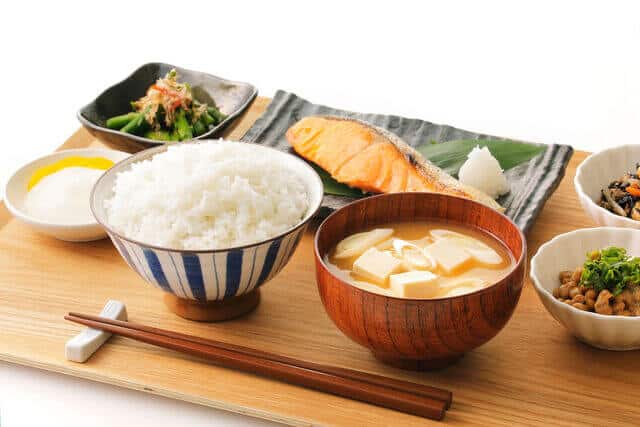
In Japan, Washoku is not just about food; it’s a reflection of culture, tradition, and a deep connection to nature. It embodies the importance of balance, seasonality, and umami in creating delicious and healthy meals. By exploring the dishes and concepts of Washoku, we hope you’ve gained a better understanding of the rich culinary heritage that Japan has to offer.
You can check some Japanese cuisines that we know you would like to try too.






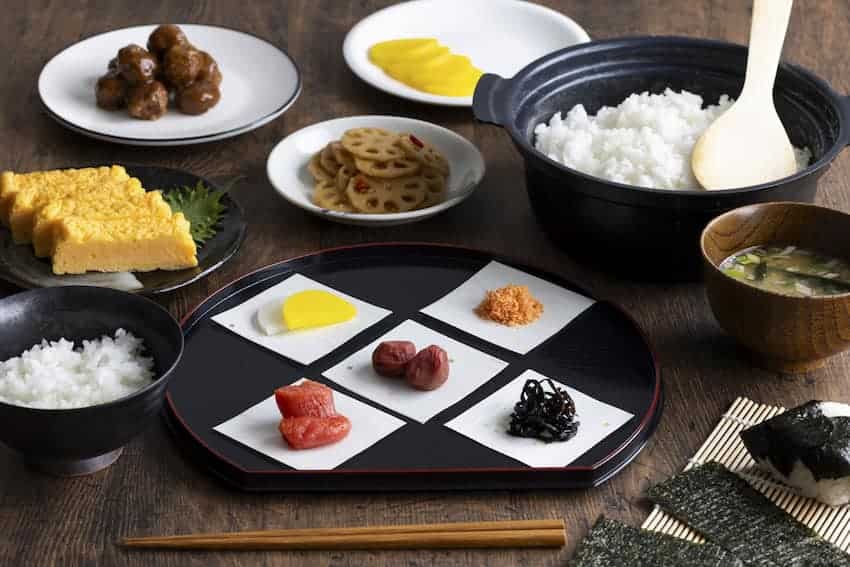
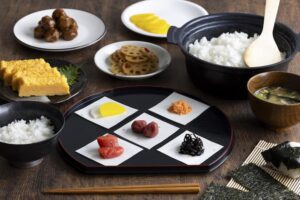
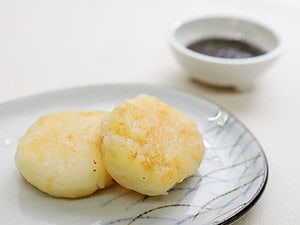
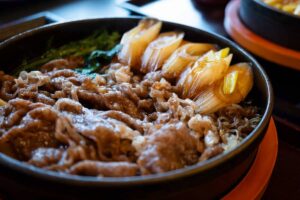
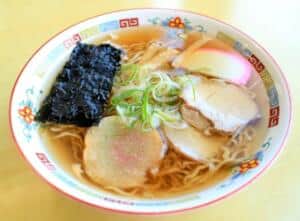

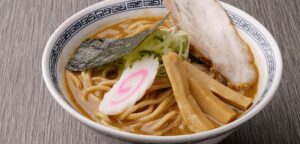
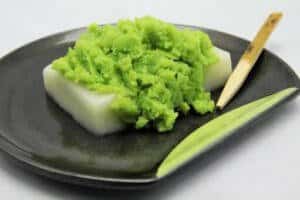
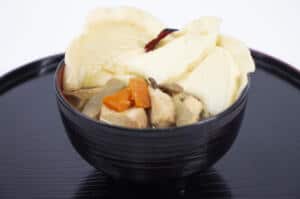
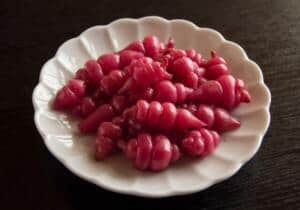
Comments